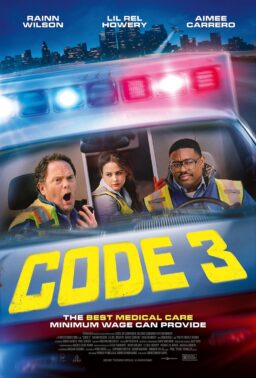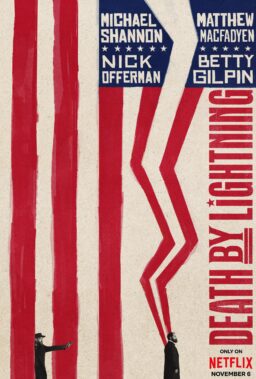<img alt="watenjpg" src="https://static.rogerebert.com/redactor_assets/pictures/scanners/i-get-it-a-hallucinogenic-experience-and-the-movies/waten.jpg" width="275" border="1" style="“>
This is about a hallucinogenic experience I had years ago… and how it relates to the way I look at movies. I can’t say this psychedelic “revelation” altered my perception of cinema in any way; it just gave the perception a form, a metaphor. And I wasn’t under the influence of an illegal synthetic drug, but an ancient (legal) herb: Salvia divinorum (“The Divine Sage”), which grows wild in Oaxaca, Mexico. Unlike LSD, which can induce an altered state of perception that lasts for hours, a hit of Salvia divinorum (smoked) provides a disorienting, headlong visual rush that may last for only a few seconds or minutes. Problem is, you could pass out for an instant before you hit the floor. (Salvia divinorum, although it’s related to the common sage plant, has since been classified as a controlled substance in a few states — and will become one in Illinois in January, 2008.)
But, talk about your theory of relativity: those seconds can last a long time. Here, as near as I can describe it, is what happened: I was “falling sideways,” as some have described it, hurtling forward through what felt like a blurred tunnel of orange and yellow leaves (this was in the fall, of course). And near the end was the shape of an overstuffed chair, not unlike the one I was sitting in at the time. Only the texture of the chair, instead of being leather or some other kind of upholstery, was the leaves, and they were moving, too, fluttering in the breeze. It’s not that the chair was made of leaves. It was that the idea of “leaves” and “chair” became inseparable, and they were intertwined fractal shapes, holding space and gently defining each other. You know how that is. The color and the texture of the leaves became one distinguishable thing, and that thing was a beautiful overstuffed chair. And then the chair was water. It wasn’t wet, it wasn’t made of H2O, it was still just a chair with the visual properties of water. It was transparent and currents or ripples slightly distorted the substance of it, as if you were peering into a soft, chair-shaped aquarium without any glass walls holding it together. (I guess you could say it was something like the “water tentacle” in “The Abyss,” but it was more stable and not so in-your-face.)
Sometimes you have these so-called revelations in the moment (especially when dreaming or under chemical influence), but you don’t quite know what is being revealed. Like when Tony Soprano takes peyote in Vegas and greets the morning sun in the desert with an ecstatic, cosmos-embracing: “I get it!” And then, the next week, as more time passes, he finds himself not only unable to explain to others what he “got,” but wondering if he ever “got” anything to begin with. My response to the leaf/water chair was more like Roy Neary staring into his mashed potatoes in “Close Encounters of the Third Kind“: “This means something.”
A while later, I was reading a book about the human brain. (Was it something by Oliver Sacks, or Antonio Damasio’s “Decartes’ Error” or “The Feeling of What Happens,” or Steven Pinker’s “How the Mind Works,” or Steven Johnson’s “Mind Wide Open” or Malcolm Gladwell’s “Blink”? My brain doesn’t recall — they’ve all run together!) I came across a passage describing the incredibly complexity of visual perception. We all know that the tongue can sense various qualities — sweet, sour, salty, bitter and savory (umami). Well, vision consists of the ability to detect color, shape, texture, motion, etc. And if our brains didn’t constantly process and assemble this information, we might be unable to recognize, say, a bouncing ball as a continuous entity, because all the aforementioned “dimensions” might come apart. So, we couldn’t tell that, even though our perception of each of them is changing to some extent as the ball bounces, “the ball” remains “the ball.” It doesn’t become a shape disassociated from color, or a motion divorced from texture, or a bunch of distinct circles or spheres… It’s appears to be the same ball, even as it moves and changes in space and time.
So, you see where I’m going with this, don’t you? It’s about the style/form/content stuff I’ve been writing about recently, because I can’t stop thinking about it: I’ve come all this way to say that separating the “content” of a movie from the experience of the movie is like trying to separate the texture from the chair or the shape from the ball. A movie is an irreducible series of images and sounds. Those images and sounds don’t “tell” a story or state a “theme.” They are the story, they are the theme, insofar as a story or theme might be discernible. Strictly speaking, they do not encode or even express something in isolation from what they are, any more than my previous example of Picasso’s “Guernica” does. (See that post below on the single image of the dust in the headlights, seen from below the riverbank, in “No Country for Old Men.”)
Am I going a bit “out there”? Well, I’m having fun doing it — and I feel I need to do something to get past the literalist approach to watching and talking about movies that’s become so pervasive and conventional we don’t even question it — or notice it — anymore. I just want to say to you (and me): Keep your eye on the movie.
Here’s David Bordwell again, in a 2006 essay for cinema-scope that needs to be re-read again and again (“Against Insight“):
Film criticism lies at the centre of nearly all intellectual discourse about the cinema, and if we take criticism to be an effort to know particular movies more intimately, it probably deserves its prime place. But contemporary film criticism is failing. In academic venues, it mostly grinds Movie X through Theory Y, in the hope that somehow the exercise will yield political emancipation. Meanwhile, film magazines and free city weeklies promote that self-assured nonconformity which prizes jaunty wordplay and throwaway judgments.
We read nonfiction for information, ideas, opinions, and good writing. Most orthodox criticism overdoes opinions, which create the critic’s professional persona. Soon opinions crystallize into tastes, and the persona overshadows the films. I realize the pressures here. Readers at all levels don’t take film as seriously as they take music or architecture, so film journalists are obliged to be superficially entertaining in a way that reviewers in other arts needn’t be. Still, most film criticism is fact-free (apart from festival buzz and chatty personal memories), and remarkably barren of fertile ideas. Go back and read, say, Rivette on widescreen cinema, or Sontag on Bresson, or Bazin on anything, and I think you’ll agree that most of today’s film critics have abandoned probing for posturing. They seem to have only one idea, and that surprisingly banal—that there is a zeitgeist and films reflect it….
– – – –
Notes on Salvia divinorum:
“Even experienced hallucinogen users say that the effects of Salvia divinorum are qualitatively and quantitatively different than any other hallucinogen that they have ever taken,” Roth says. “It appears to cause an experience that we have dubbed ‘spacio-temporal dislocation.'”
In other words, if the dose is strong enough, users take an instantaneous trip to another time and place, an experience many first-time users of salvia find too intense, disturbing and even frightening. Those who try salvia often don’t like it and won’t try it again.
“Most people who do it hoping to have just an interesting high find it confusing and disappointing,” says Daniel Siebert, who has researched Salvia divinorum extensively and urges its responsible use. “It’s not something that’s fun to do. It doesn’t have a stimulating effect. It doesn’t really have a euphoric effect.”
Conclusion: a “No Country for Old Men” is better than hallucinogens.










